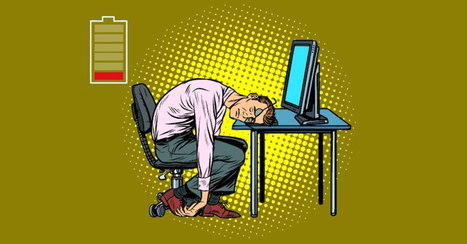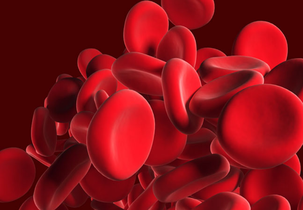|
12/27/2019 2 Comments Iron deficiencyGetting the most from your foods and supplementation Iron deficiency and needs Iron deficiency effects more than 2 billion people worldwide, and around 1 in 8 Australians. About 75% of our intake is directed to the bone marrow where it is needed for the production of red blood cells, red blood cells account or over 80% of the 30 trillion or so cells in the adult human body and transport oxygen essential for life. Red blood cells are produced at around 200 billion per day and so need a steady supply of iron maintain proper production, around 20-25mg/day. Getting the right amount is crucial, not enough impacts red blood cell production but too much can cause digestive symptoms and distress, feed pathogenic bacteria, increase inflammation, oxidative stress and tissue damage in the body. So self-diagnosing and medicating may not be a wise decision, especially where there is a family history of hemochromatosis or conditions effecting the liver, always take the advice of a health professional. Iron in the diet Iron in the diet come in 3 forms, ferrous iron (Fe2+), Ferric Iron (Fe3+) and Haem Iron (ferric iron attached to a Haem protein). To absorbed into the body, dietary iron must be transported from the intestinal tract, into the absorptive cells, then transported through the cell wall to be bound to transferrin proteins and carried through the blood stream to be utilised in the body. It goes a bit like this, dietary iron is generally Fe3+ but to be able to pass into the cell it must be converted to Fe2+ by an enzyme on the surface of the cell which is activated by vitamin C, once inside the cell it is quickly converted back to Fe3+ to be stored, when the body needs it in the blood stream the store Fe3+ needs to be converted to Fe2+ to pass through the cell wall into the blood stream where it is quickly converted back to Fe3+to be carried away by special protein transporters in the blood. Complicated hey, and thats why it is difficult to maintain good levels of iron because of the multistep process. Iron from meats are readily absorbed because travel into the cell via protein channels attached to the haem, skipping the initial step and enter the cell ready to be stored. Iron from plants however need to be converted before they can be absorbed. The problem of iron deficiency can also be made worse when the diet contains foods high in chemicals that bind to iron and inhibit absorption these foods are predominantly plant foods and the chemicals are phytates, oxalates, polyphenols and tannins.  How is iron regulated Much of our daily iron is harvested and recycled from worn out red blood cells in the spleen, but there is daily loss due to the sloughing off of intestinal absorptive cells and loss due bleeding from injury or for women during their reproductive years. Our bodies have built in mechanisms to prevent iron overload and tissue damage from the oxidative stress caused by too much unbound iron, two of these mechanisms are important when considering supplementation for restore low levels of iron, firstly a hormone produced by the liver, Hepcidin, the second is a protective mechanism of the absorptive cells, the mucosal block. Hepcidin inhibits the absorption of iron by binding to the receptor proteins on the cell and taking the pace of the iron, in times of increased need hepcidin production is suppressed allowing for greater absorption, and in times of high iron saturation hepcidin production is increased to prevent overload. The second mechanism, the mucosal block, is this, when there is an oversupply of available iron the receptor proteins bind to the iron and withdraw into the cell safely bound to the iron thereby reducing the available receptors on the surface of the cell. In doing this it prevents toxic unbound iron entering the body until the iron is safely stored in the cells. Getting the best result if I need to supplement Is the form important? Yes! If you need to supplement always take the best advice from a health professional, it’s important to consider the quality of form of the product you chosen, common forms are Iron Citrate, Iron Sulphate and Iron Bisglycinate
 Is dosage and timing important? Yes! The hormone hepcidin has a diurnal rhythm and is found to be lowest in the morning so supplementing in the morning ensures better absorption. An influx of iron into the cell provokes the (mucosal block) mechanism preventing/reducing the effectiveness any subsequent dose on the same day and also induces and increase in the production of Hepcidin. Supplementing once a day or even every second day in the morning has been found to be most effective in raising the available iron within the body, even at lower doses. What else should I consider in increasing iron absorption? Whether from dietary sources or supplementation, Vitamin C plays a role in converting ferric iron to ferrous iron, making it available for absorption. Combining vitamin C rich foods with iron rich foods improve absorption. Copper assist in iron absorption; liver, shellfish, crab, nuts, sunflower seeds, lentils, soy products, dark chocolate, broccoli, mushrooms are all good dietary sources of copper Vitamin A assists in the transport and storage of iron; Liver, Fish, Fish oils, butter, kidneys Fortified milk, Margarine, low fat and reduced fat milk and apricots are good sources of vitamin A and Dark green and yellow orange vegetables and fruits. Carrots, spinach, sweet potato, broccoli, mangoes, cantaloupe, peaches and apricots and good sources of carotenoids which are converted to Vitamin A as needed and are also a good pretention against increase in oxidative stress from higher intake of iron. Vitamin B2 increases absorption and reducing loss due to the sloughing off of intestinal cells; liver, mushrooms, spinach and other green leafy vegetables, broccoli, asparagus, milk and cottage cheese, yeast products (vegemite), almonds, wheat germ and mushroom are all good sources. What about if want to increase my levels with my diet alone, can I do that? Diet is such an important factor in improving and maintaining good levels of iron, and any nutrient for that matter and having a diet and lifestyle that supports this is the ultimate goal. Having insufficient iron in your diet may not be the root cause of low levels and a Clinical Nutritionist job is to access all the factors involved and build a plan with you, for you, to help you address all the factors effecting your iron status ongoing. Make an appointment today, it will be well worth the time.
2 Comments
10/20/2023 12:29:45 am
iron deficiency is a common issue but vitamin c can help.it enhances iron absorption making sure your body gets the iron it needs so remember to include vitamin c rich food in your diet to support healthy iron level it will not only help to overcome the iron deficiency but also helps to increase collagen production and makes skin healthier. kindly add vitamin c in your diet and stay strong and vibrant.
Reply
Leave a Reply. |
AuthorHealthy Blogs are Authored by Accredited Clinical Nutritionists at Inspired Nutritional Medicine Archives
December 2019
Categories |
Proudly powered by Weebly
